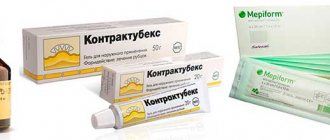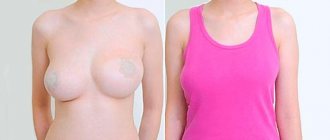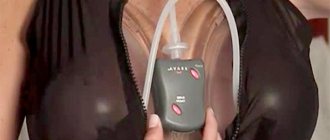Causes of abdominal edema
Depending on the patient's activity, swelling may spread to different areas of the abdomen. It manifests itself due to the inflammatory process. Signs of the inflammatory process:
- significant expansion of capillaries;
- release of plasma from blood vessels into the tissue;
- pain caused by swelling pressure on pain receptors;
- increased temperature ;
- dysfunction vessels .
Why complications arise
Prevention of the development of various postoperative complications is one of the most important stages of any operation. Doctors, when calculating the risk of developing a particular pathology, take into account a huge number of factors, trying to exclude as many of them as possible.
It is worth considering that the causes of complications vary depending on what kind of postoperative pathology the patient developed.
In total, postoperative complications are divided into two large groups: early and late.
Early pathologies occur no later than two to three weeks after surgery, and include:
- hematoma (occurs due to the use of anticoagulant drugs, due to congenital abnormalities in the normal functioning of the blood coagulation system, if the operation is performed during menstruation or shortly before its onset);
- lymphorrhea (the main reason for its development is the closure of one or more lymphatic vessels during surgery);
- inflammatory reaction (the body’s reaction to a foreign object, and in this case to an implant);
- suppuration (failure to comply with the rules of asepsis and antisepsis, improper care of postoperative wounds, neglect of antibiotic therapy when indicated);
- swelling (most often a consequence of an inflammatory reaction, but other factors are often involved in their formation).
Late complications are those that arose later than 2-3 weeks after the operation.
These include:
- capsular contractures (formed if excessively rough scar tissue forms around the implant);
- implant confusion (the most common cause is trauma in the chest area or initially incorrect choice of implant location);
- wrinkling of the implant (formed if the patient’s integumentary tissue has an excessively thin structure);
- implant rupture (the most common cause is poor-quality source material, followed by chest trauma).
Preventing swelling after breast surgery
Most often, swelling after mammoplasty occurs in women who do not follow the doctor’s recommendations. Following the list of recommendations prevents complications from occurring.
On this topic
- Mammoplasty
Compression garments after mammoplasty
- Editorial board of Plasticology.ru
- October 17, 2020
Recommendations of the plastic surgeon after surgery:
- compression during the postoperative period . Immediately after the operation, the chest is bandaged with elastic bandages. Bandages help fix the mammary glands in one position and reduce swelling. After the first dressing, the bandages are replaced with compression garments. It must be worn continuously for 4 weeks, then 2-4 weeks only during the day.
- Proper care . The wound should be treated with antiseptics recommended by the doctor. It is necessary to avoid taking hot baths, baths or saunas. When taking a warm shower on the 6th day after surgery, strictly monitor the stitches and do not get them wet. Use personal hygiene products without dyes.
- Maximum reduction in physical activity. It is necessary to limit the movement of your hands, do not hold your hands above your head, limit yourself from lifting weights, heavy housework, aerobics, and fitness. But you shouldn’t limit the mobility of your legs. When resting, you should lift them up onto a pouf and take walks in the fresh air more often.
- control . Visiting the solarium and the beach is allowed after 3 months.
- Follow a diet and drink the required amount of water. A natural, balanced and healthy diet will ensure that the patient’s body weight is maintained, and this will help speed up the recovery process. Exclude from the diet heavy foods containing a lot of proteins and fats, hot and spicy dishes, pickles and smoked foods. To restore the body's water balance, it is necessary to consume large amounts of drinking water.
- Maintaining bed rest. Sleeping on your stomach is allowed after the postoperative recovery process is completed and all stitches have healed.
- Prohibition of smoking and drinking alcohol.
Useful tips
There are a number of additional recommendations that the patient can receive from her doctor in order to combat postoperative swelling:
- it is necessary to carefully perform the range of movements in the shoulder girdle (those movements that are used daily in combing, brushing teeth, dressing);
- for several weeks after the operation you will have to give up all medications and products that can affect the blood coagulation system (fish oil, aspirin, etc.);
- for several weeks there is a ban on sleeping on the stomach; it is recommended to sleep in a semi-sitting position or with pillows placed under the back and head;
- you will have to stop driving until the pain goes away;
- Moderate physical activity without overexertion is recommended; walking in the fresh air is considered an ideal option.
It is necessary to pay attention to the selection of underwear after the doctor allows you to change compression bras to ordinary ones.
So, in the first three months after surgery, it is allowed, after removing compression garments, to use a well-chosen sports bra.
It will be possible to replace it with underwear with underwires no earlier than six months after the intervention.
Photo: Correct selection of implants
Reducing swelling after mammoplasty
It is worth remembering that the time required to relieve swelling in the chest and abdomen depends on the individual characteristics of the body and the age of each patient.
There is no immediate way to get rid of it; there is a list of methods that will reduce the degree of swelling and reduce pain. These methods are safe and easy to use, but each treatment method should be discussed with your doctor.
Cold compress
Cold compresses speed up the process of contraction of blood vessels and reduce pain in the area of swelling. But it’s worth remembering that the ice needs to be wrapped in several layers of cotton cloth and only then applied to the areas of swelling for a few minutes.
Repeat the procedure after some time. Ice can be replaced with a bag of cereal, chilled in advance in the freezer.
Massage
It is allowed to massage the tumor area after a week. The doctor demonstrates the procedure, after which the patient repeats the massage independently at the specified time. Massage of the glands eliminates the appearance of connective tissue and stretch marks.
Sleep position
To reduce swelling, you should monitor your body position during sleep and rest. Incorrect positioning prevents fluid from accumulating and leads to increased swelling. At first, sleep and rest on your back, creating a pillow angle of 25–45°. Later on your side and only after a month lie on your stomach.
The right underwear
To improve recovery processes, medical compression garments are needed. The underwear supports the fabric, relieves swelling, gives the glands the desired shape, and prevents the seams from coming apart.
Herbal diuretic
Herbal decoctions and juices have diuretic effects. Green tea, herbal chamomile tea will perfectly relieve swelling.
Minimum salt
Swelling may increase after consuming large amounts of salt. Salt retains fluid in the body. The postoperative period requires drinking a large amount of water, but if the kidneys are functioning properly, water washes away salt and does not lead to the accumulation of excess fluid in them.
Drainage
To drain accumulated fluid after breast reduction or enlargement surgery, women are provided with a drainage system. The doctor recommends wearing it for 2-3 days after surgery.
Patients should use it carefully, do not snag tubes when changing clothes or while sleeping, and do not drain the liquid themselves. It is not very comfortable or pleasant to use, but it still significantly relieves swelling in the chest area.
Exercise stress
Heavy physical activity is prohibited immediately after surgery. But after the body’s recovery process, proper physical exercise will improve blood circulation in the tissues and remove swelling.
When to see a doctor
Swelling is not always an expected and normal reaction, so its character must be carefully monitored, the operated area must be inspected daily, and the general condition must be monitored. There are several factors to be wary of:
- Changes on the skin. This may be cyanosis or redness, the appearance of a small rash, or local compaction.
- Continued increase in swelling a week after mammoplasty.
- Purulent discharge from under surgical sutures.
- Fever and chills.
- Constant burning sensation in the chest after mammoplasty, which did not go away within a week.
It is not necessary to show all the signs. One is enough to go for an unscheduled inspection.
Recommended drugs
A sharp increase or decrease in swelling, accompanied by pain or elevated body temperature, requires emergency medical attention. Such symptoms lead to infection. In this case, no methods other than antibiotics or ointments will help.
Antibiotics or other drugs are used strictly as prescribed by the doctor. After surgery, Lyoton-gel, Traumeel S ointment, Essaven-gel can be applied to the site of swelling 2-3 times a day.
After 40 minutes, remove the remaining ointment with wet wipes. Arnica reduces swelling after surgery. This drug can be used in tablet or ointment form.
On this topic
- Mammoplasty
Augmentation mammoplasty
- Editorial board of Plasticology.ru
- October 17, 2020
The natural pineapple enzyme Bromelain is recommended to be taken for several days before surgery and 1-2 weeks after surgery. Homeopathic drops Lymphomyosot help reduce swelling in the chest and abdomen (10 drops, 3 times a day).
For swelling, which is accompanied by pain in the chest area, Nise or Ketanol, 2-3 tablets per day, will help. To speed up the recovery process, the suture area is treated with alcohol once a day. Detralex helps strengthen blood vessels and ease the uncomfortable period of swelling (1 tablet 3 times a day).
Associated symptoms during the rehabilitation period
Injury to tissue in the bust area or the introduction of a foreign body causes consequences that manifest differently in each patient:
- Pain. You can't do without it. Immediately after the anesthesia wears off, my nipples and back hurt, and my glands swell. At first the syndrome increases, then subsides and disappears completely. To alleviate the condition, the woman is prescribed analgesics. How much breast pain after mammoplasty depends on various factors. Usually the symptom subsides after two weeks.
- Suppuration and burning. The condition indicates infection of the wound and penetration of bacteria through the injured tissue. A burning sensation in the chest is accompanied by high fever, back pain, and prolonged wound healing with the release of pus. To solve the problem, antibacterial therapy is prescribed, drainage and lavage are performed. If the burning sensation does not go away after the procedures, it may be necessary to remove the implant.
- Hematoma. Appears if bleeding begins from a damaged vessel or normal circulation is restored in the area where the lymph has clotted during surgery. Hematoma after mammoplasty can be recognized by a dark clot visible through the skin and a small thickening. It is removed with a scalpel or physiotherapeutic methods.
- Allergy. If the wrong material is chosen, the breast implant presses and burns. More often, the symptom manifests itself as a result of an omission during the preliminary examination, when the possible reaction of the body to a foreign body was not thoroughly studied. In this case, the endoprostheses will have to be removed. A manifestation of an allergy to drugs may be atypical swelling, which is accompanied by a change in skin color.
- Seroma. Fluid accumulates under the implant on one or both sides. Externally, seroma looks like uneven swelling and is detected only by ultrasound. The liquid is removed with a syringe, observing its exact location using ultrasound.
- Displacement of the endoprosthesis. It is impossible to predict how natural fabrics will behave. Excessive compaction may cause deformation or displacement of the implant. Surgeon errors and improper pocket formation are also possible.
- Loss of skin sensitivity. This is a normal phenomenon due to a violation of the integrity of the nerve endings, which should resolve within six months. In very rare cases, nipple sensitivity may be affected.
What you need to know before surgery
Pre-requisite:
- plan the time of surgery so that the operation does not occur during menstruation. It is better to plan the operation 5 days before or 3 days after your period;
- if your periods are irregular, then it is better to have surgery after your period;
The presence of menstruation is not an absolute contraindication for surgery.
However, the following consequences may occur:
- decreased blood clotting during menstruation can cause bleeding;
- during menstruation, natural resistance to infections also decreases, which is an additional factor for the occurrence of complications;
- the rehabilitation period increases;
- additional bruising and swelling appear;
- the tissue's potential for healing deteriorates.
Signs of breast swelling after a lift
Breast swelling is the result of fluid accumulation in the tissue. It appears after surgery and increases over the next few days. If the operation was successful, the patient is discharged home the next day after it. In the first weeks, a woman will most likely experience natural symptoms such as:
- an increase in breast volume and a feeling of skin tension;
- the swollen area retains indentations from the fingers for a long time when palpated;
- the skin on the chest becomes pale and cold due to poor circulation.
The above symptoms are natural and normal for post-operative swelling. They allow you to determine whether healing is within normal limits and whether there is cause for concern. In addition to performing a self-examination, a woman must attend consultations prescribed by a doctor and follow all rules during the rehabilitation period.
Is this possible?
Edema is a physiological reaction of the body; it occurs in response to inflammation.
Any tissue damage causes an inflammatory process.
It can occur even without infection of the wound surface. This is called aseptic inflammation. It can be enhanced by the presence of a foreign body (implant).
The severity of edema depends on the individual characteristics of the body:
- structure and density of damaged tissues;
- surgical techniques;
- the body’s reaction to the implant and compliance with the doctor’s recommendations after surgery.
The chest swells first, but swelling can also spread to the abdomen.
What to do
If swelling in the abdomen occurs after mammoplasty, you should notify your doctor. He will examine you and give you recommendations on what to do.
There are several tips to reduce swelling:
- cold on the stomach, you can use heating pads with cold water or a bag filled with cereal, left in the freezer for some time;
- constantly wear specially selected compression garments;
- try to stand or sit less;
- do not take a hot shower; in the first days after surgery, the water should be slightly warm;
- Healthy food. The diet should be rich in vitamins and minerals;
- you need to limit your salt intake, it is the first to leave the bloodstream with plasma and retain fluid in the tissues;
- Do not limit your water intake under any circumstances. Edema, paradoxically, often occurs not due to excess, but due to lack of water in the body;
- you can take homeopathic medicines and use creams to relieve swelling, which will be recommended by your doctor;
- in some cases, the doctor may recommend a special lymphatic drainage massage of the chest and abdomen to improve the outflow of lymph through the vessels. It cannot be performed independently in the first days after surgery. As healing progresses, the patient is taught massage techniques and allowed to do it at home. It also reduces swelling.
Abdominal edema during mammoplasty gradually disappears; after a month or two, not a trace remains of it.
There is no need to worry, it is better to pull yourself together and behave correctly in the postoperative period, then in a few months, your breasts and stomach will look beautiful and please the eye.
When should you see a doctor?
Once the swelling subsides, there should be no remaining discomfort. However, if pain in the area of the sutures or nipples persists, especially if it lasts more than two weeks after the operation, this is a reason to visit a doctor. Another reason to visit a surgeon arises if the chest area is painful to touch, hematomas appear or do not go away, and general changes in the condition of the body are observed. A change in skin color is also not the best sign: perhaps an inflammatory process has begun. In order to prevent the development of dangerous side effects, choose trusted clinics and experienced doctors. The use of high-quality materials that have undergone clinical research allows us to avoid such unpleasant consequences of mammoplasty.
To make an initial consultation with a Bust Clinic specialist, just call us at the specified phone number or use the convenient feedback form. Our administrator will contact you shortly and help you choose the optimal appointment day.
Prevention of complications
If a woman decides to undergo major surgery to change the shape or size of her bust, she must prepare herself for numerous inconveniences and restrictions after mammoplasty. Strict rehabilitation conditions regarding taking medications, undergoing procedures and wearing compression stockings must be supplemented with important rules:
- sleep half-sitting;
- do not drive a car until the pain disappears;
- accept a load of no more than 3 kg;
- Raise your hands carefully and only as a last resort.
To eliminate as much as possible risks that do not depend on personal behavior, you must carefully select a surgeon and undergo a complete preliminary examination. Before the operation, it must be established that the implant material is completely compatible with natural tissues, there is no allergy to medications, and there are no diseases that may worsen after the operation or affect the healing of sutures.
If the doctor has identified at least one obstacle to mammoplasty, you need to hear it and choose another method of bust correction.










